
Charge Air Coolers
Used to cool the hot, compressed air from the turbo before it reaches the engine, the intercoolers improve engine efficiency and reduce emissions for marine and land-based stationary engines.
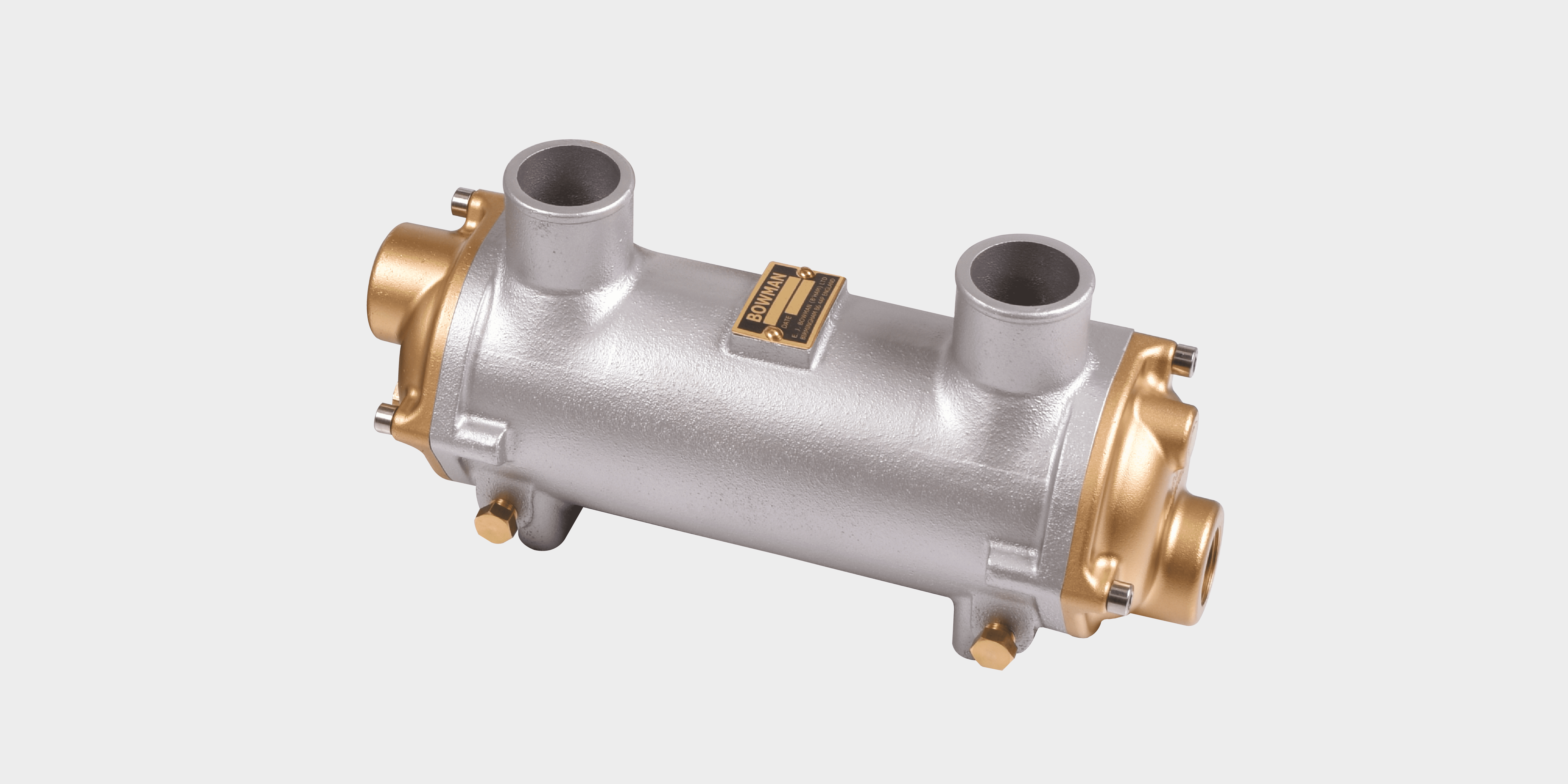
Used to cool the hot, compressed air from the turbo before it reaches the engine, the intercoolers improve engine efficiency and reduce emissions for marine and land-based stationary engines.
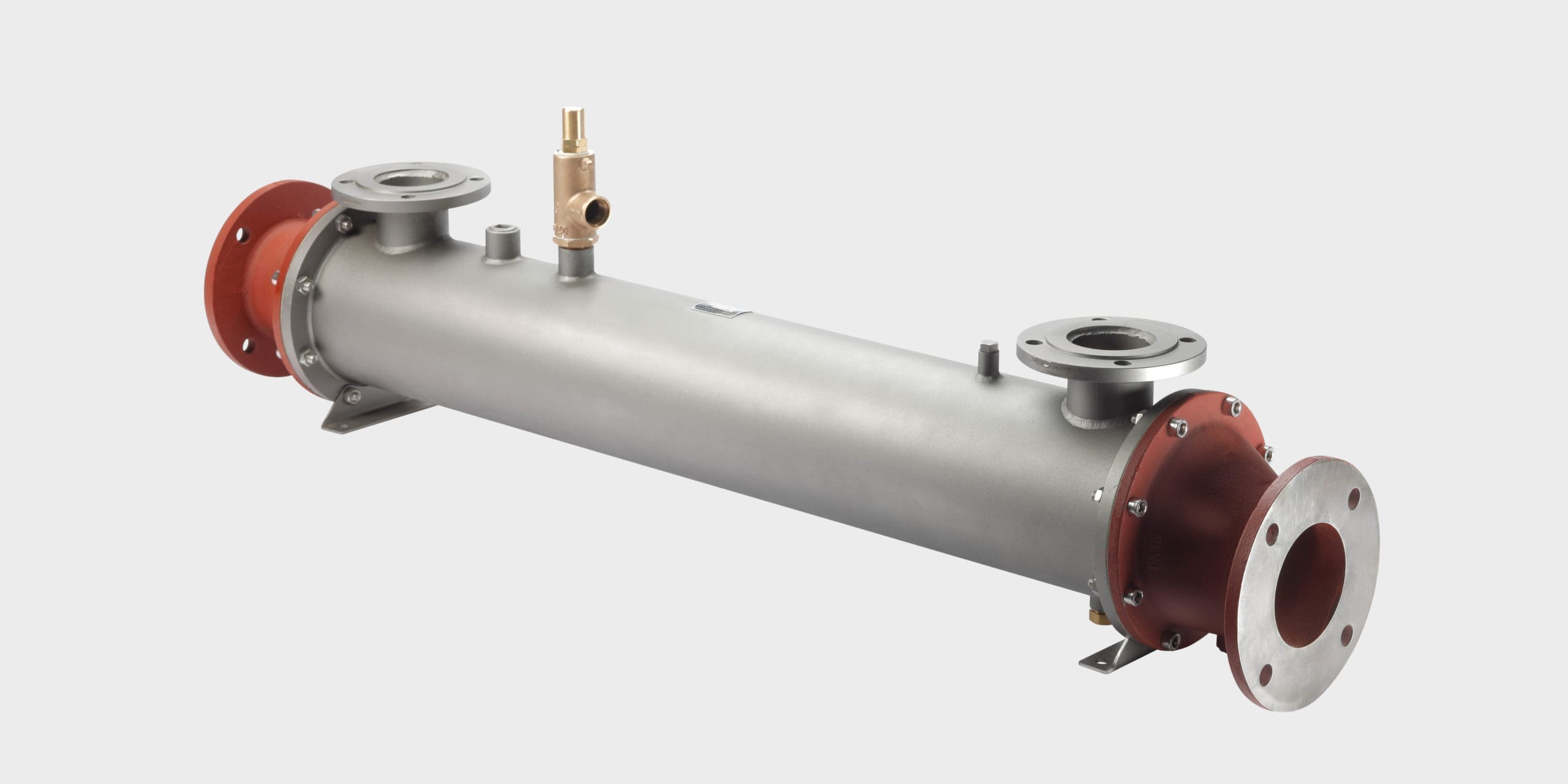
Exhaust gas heat exchangers are designed to recover waste heat energy from the exhaust stream of reciprocating engine powered generating sets.
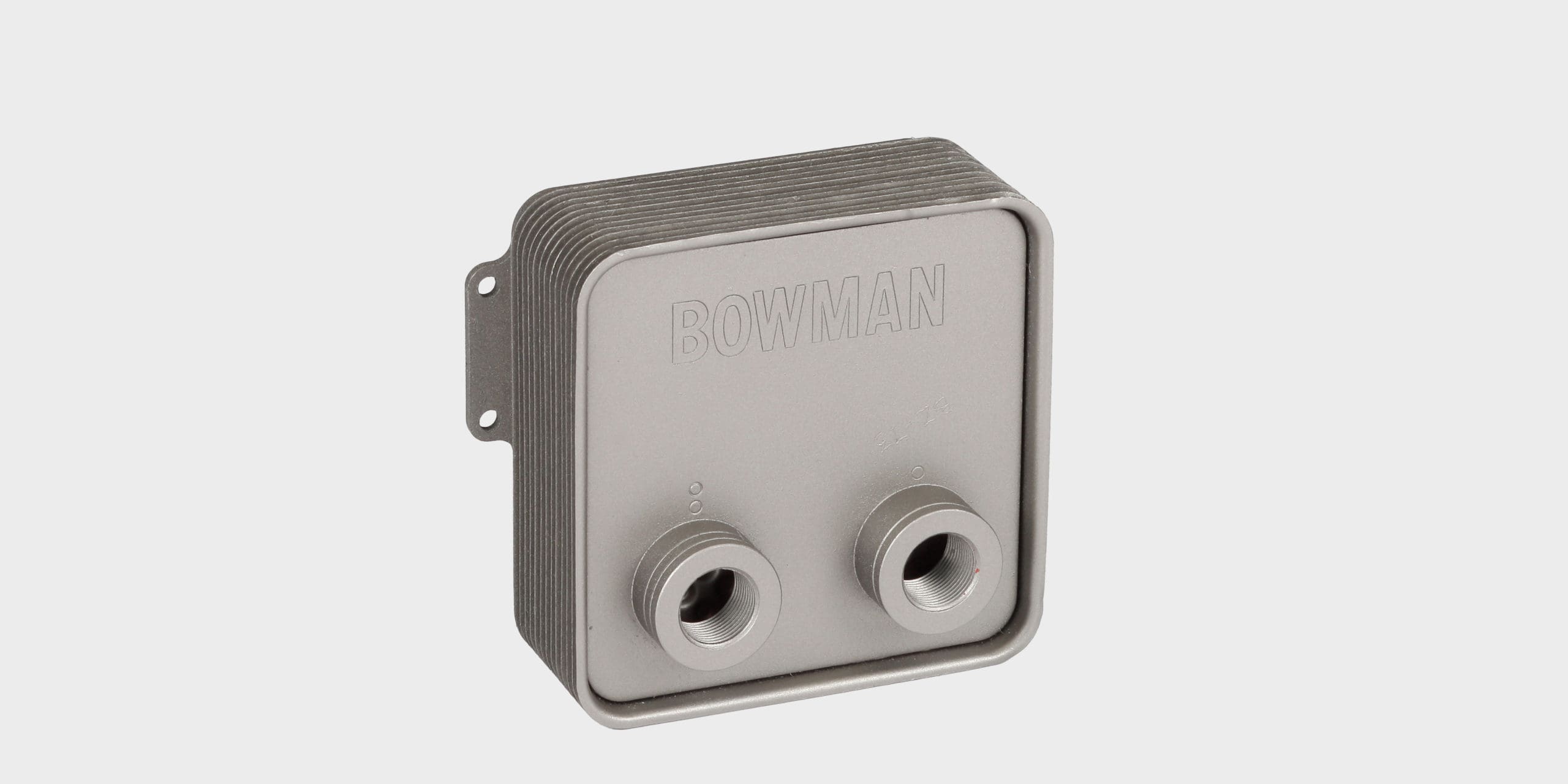
Bowman 'copper free' fuel coolers are compact, highly efficient heat exchangers suitable for fuel conditioning rigs in the automotive testing industry.
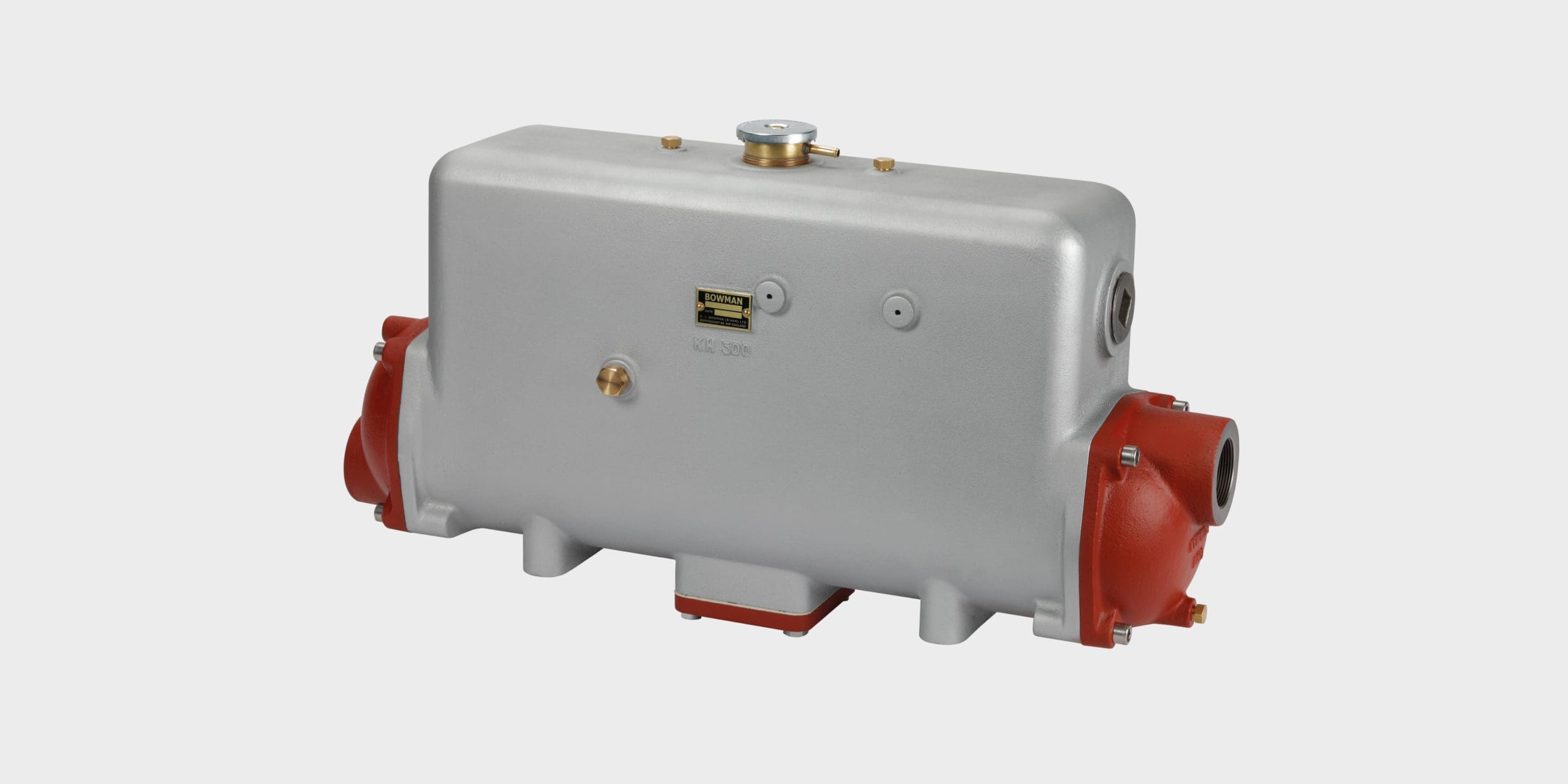
Engine coolant header tank heat exchangers for marine propulsion, gensets or stationary land-based engines.

Bowman EC 80-5113-1T heat exchangers provide a new solution for heating spas and hot tubs in just a fraction of the time taken by traditional electric heaters.
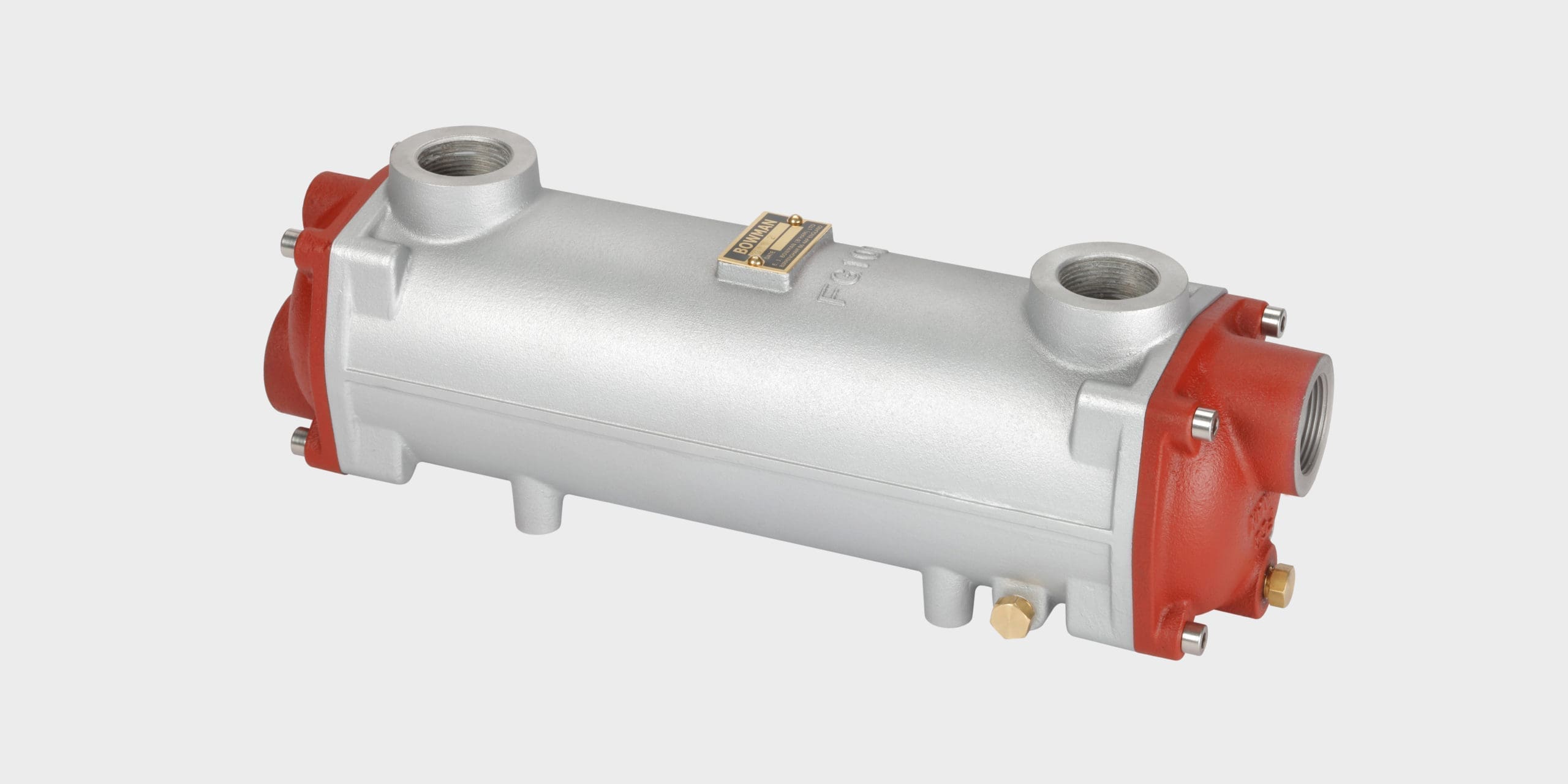
Highly efficient heat transfer solutions for cooling marine, land-based and underground hydraulic systems.

Bowman inline plate heat exchangers are a compact, economical solution for high efficiency heat transfer.

Bespoke cooling solutions for a range of popular marine engines from major OEMs, including coolant heat exchangers, charge air coolers, plus combined heat exchangers and exhaust manifolds, suitable for cooling marine engines up to 1 MW.
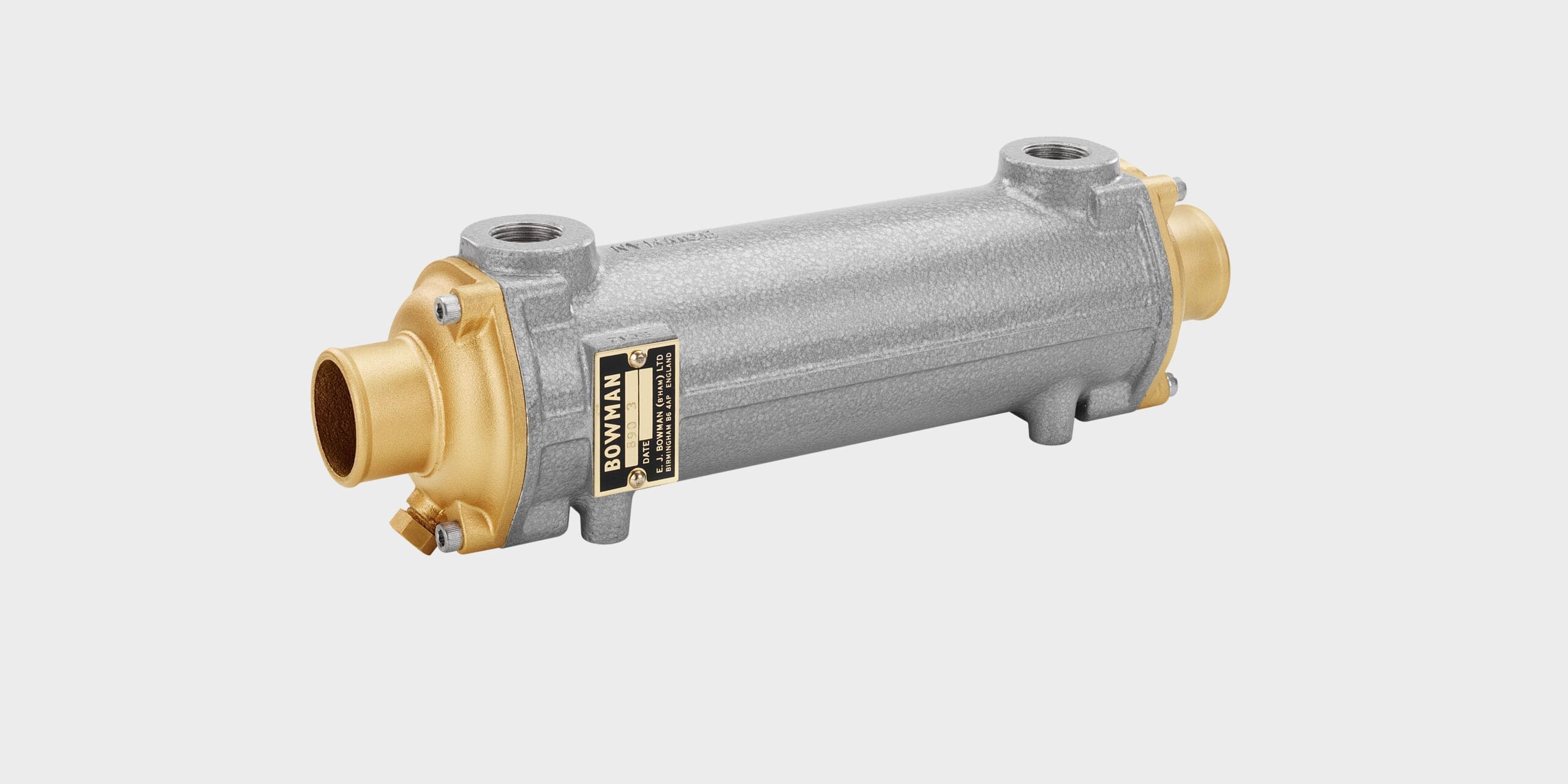
Bowman has a range of highly efficient oil coolers designed for marine and industrial engines and transmissions.

Efficient heat exchangers for cooling electric marine motors, hydrogen fuel cells, battery packs, chargers, AC-DC converters, DC-DC converters, inverters and associated equipment for electric and hybrid marine propulsion and charging systems.
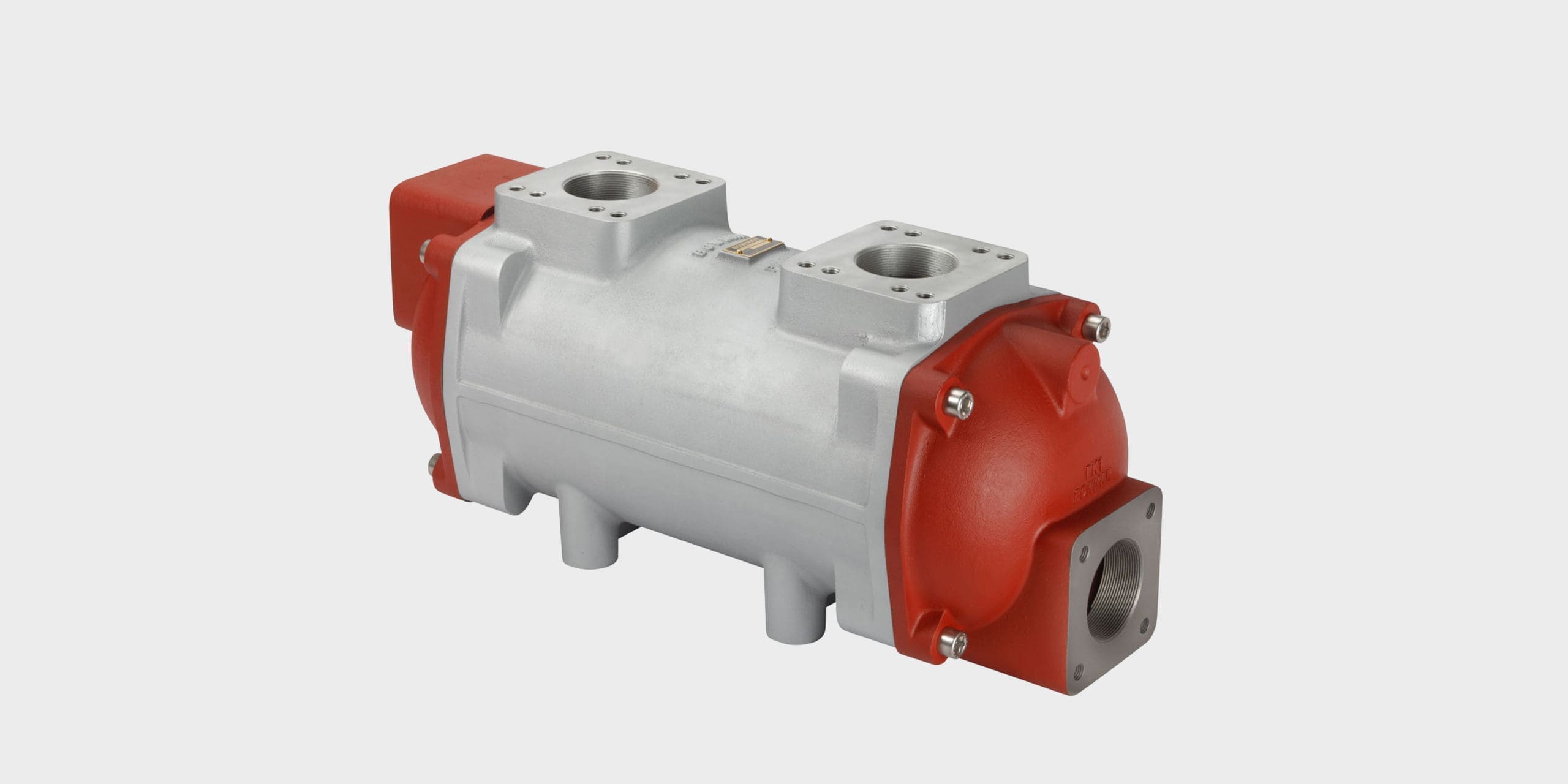
Highly efficient heat transfer solutions for cooling a variety of applications where air and fluids need to be cooled by fluids.
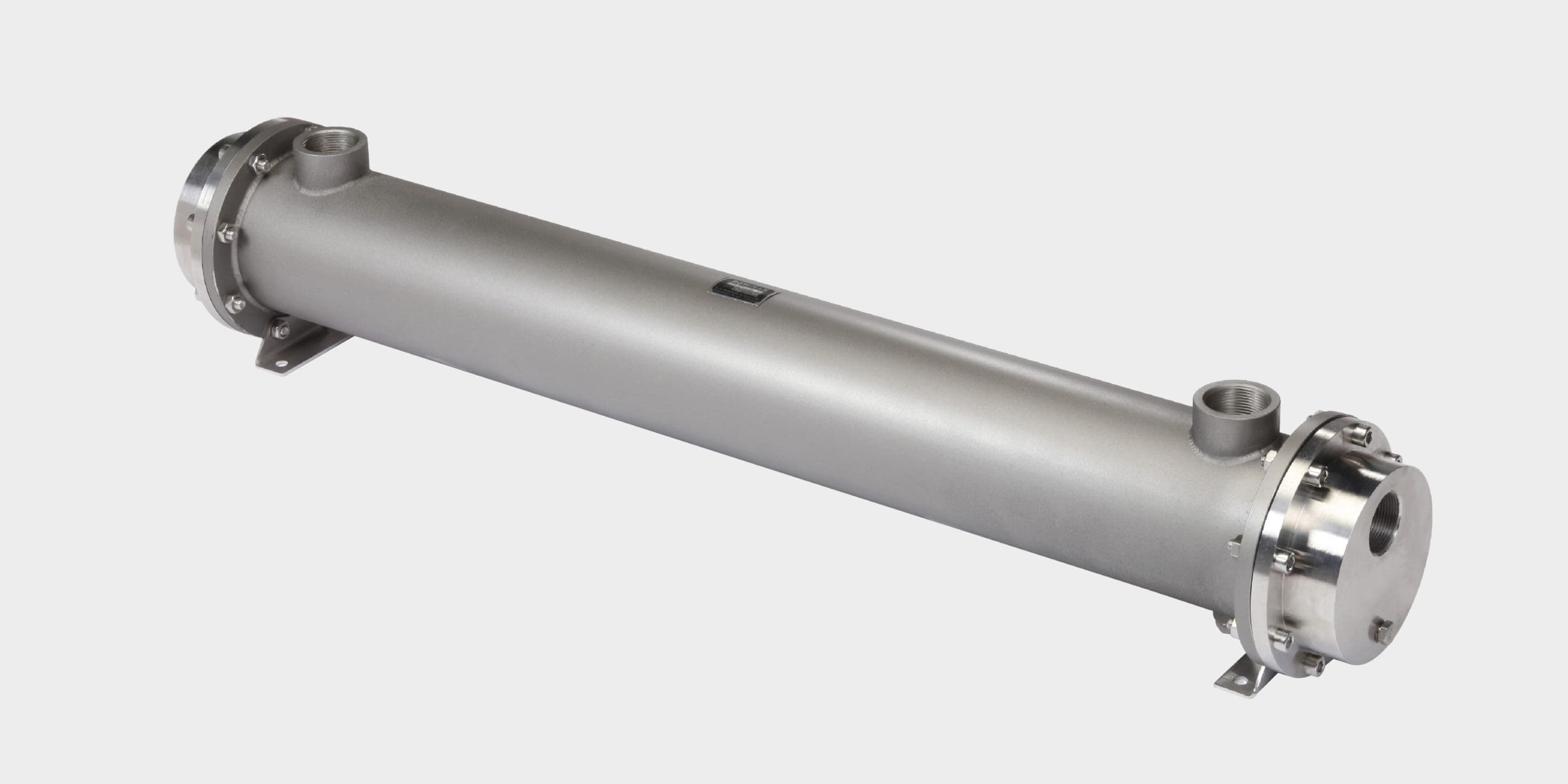
Many applications require stainless steel shell and tube heat exchangers and Bowman provide a standard range of units that are suitable for cooling or heating a variety of fluids.
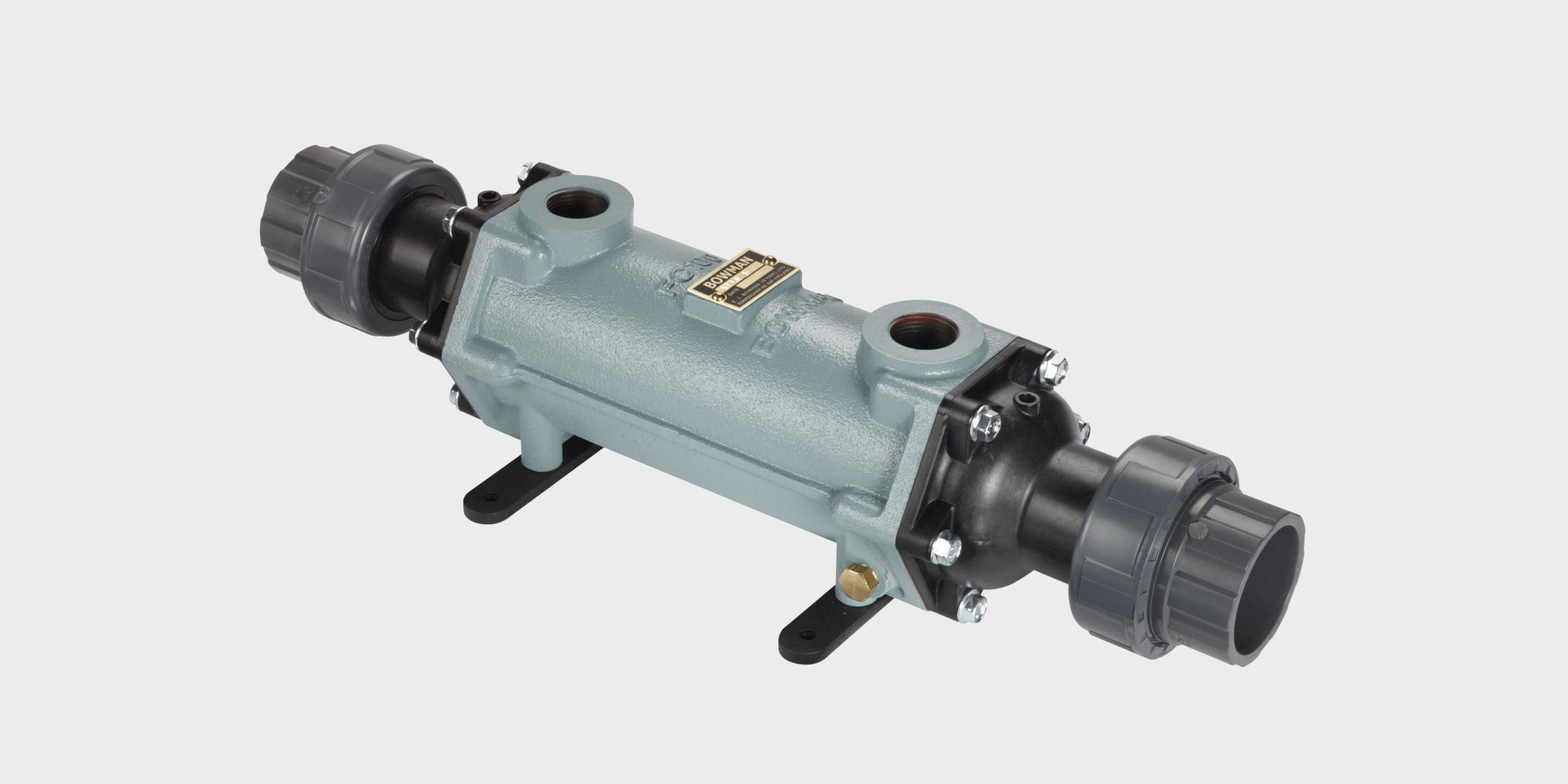
Bowman swimming pool heat exchangers are renowned for reliability and efficiency. Whether heating your pool with a traditional boiler or a renewable energy source, Bowman is the obvious choice.

Premium quality heat exchangers and oil coolers for precise temperature control of engines under test cell development conditions.
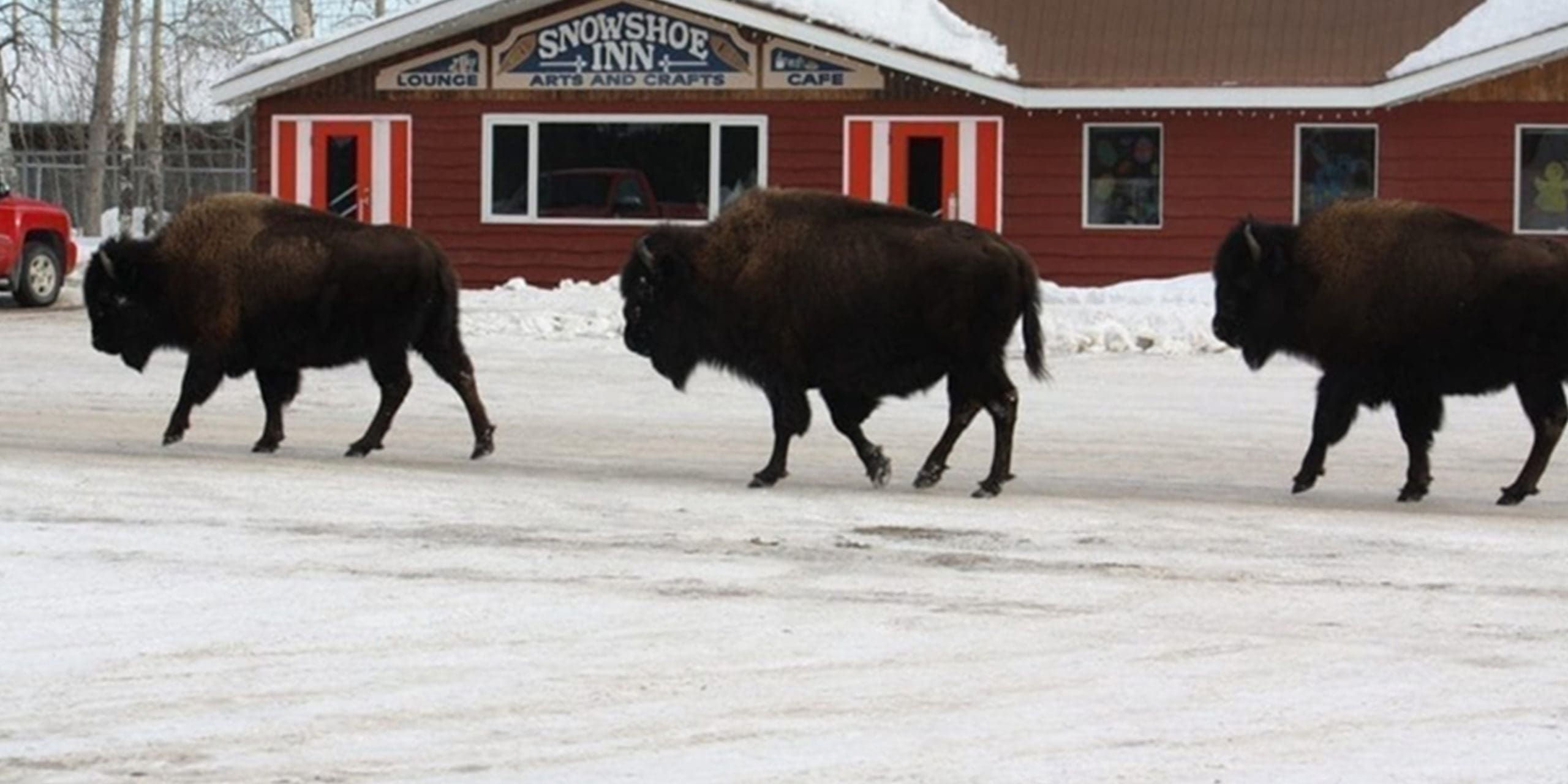
Recovering waste heat energy from engine powered generating sets for biogas, diesel and natural gas applications up to 1 MW.
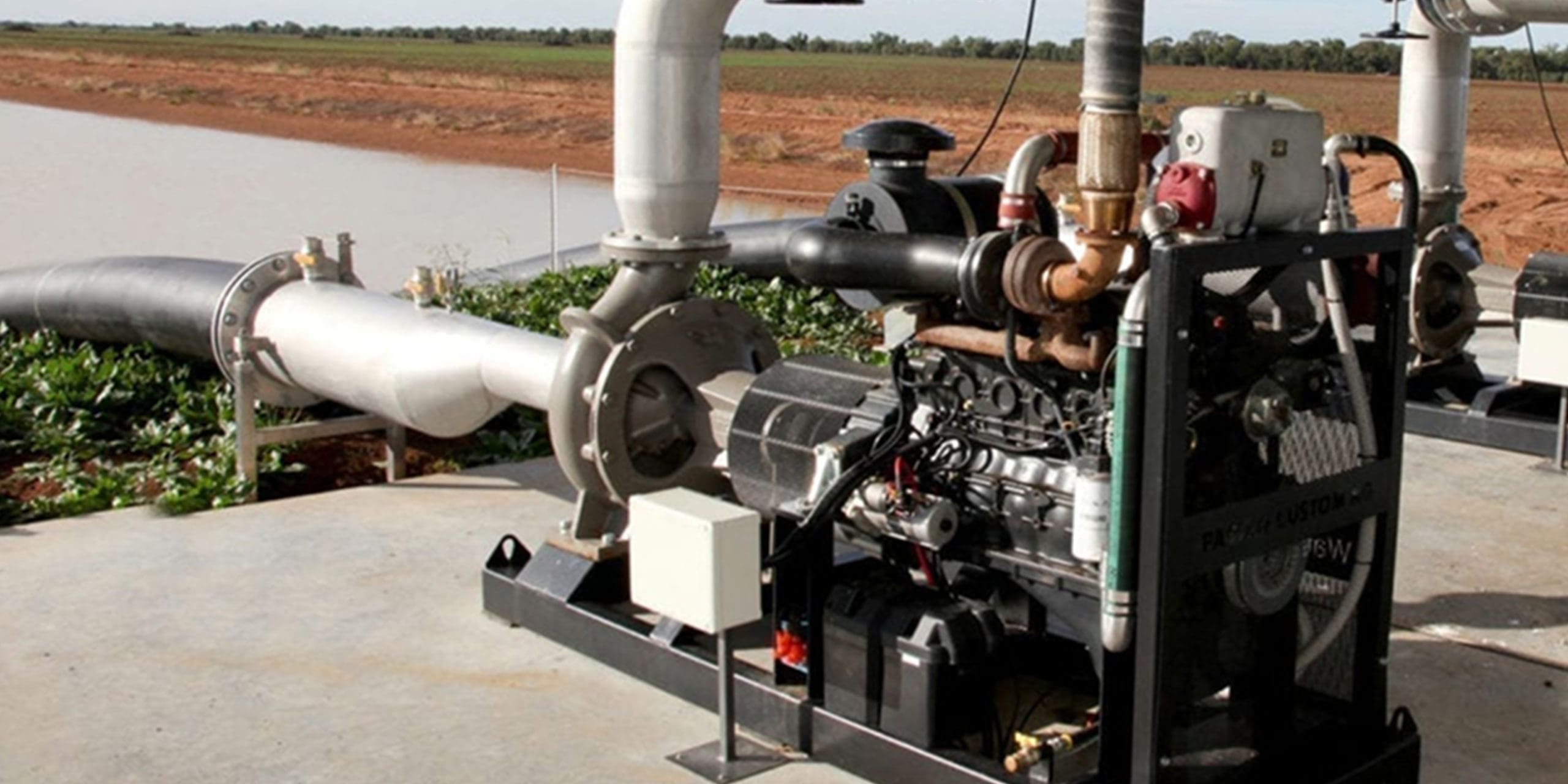
Efficient cooling for stationary / land-based engines where air cooling is either unavailable or inappropriate.
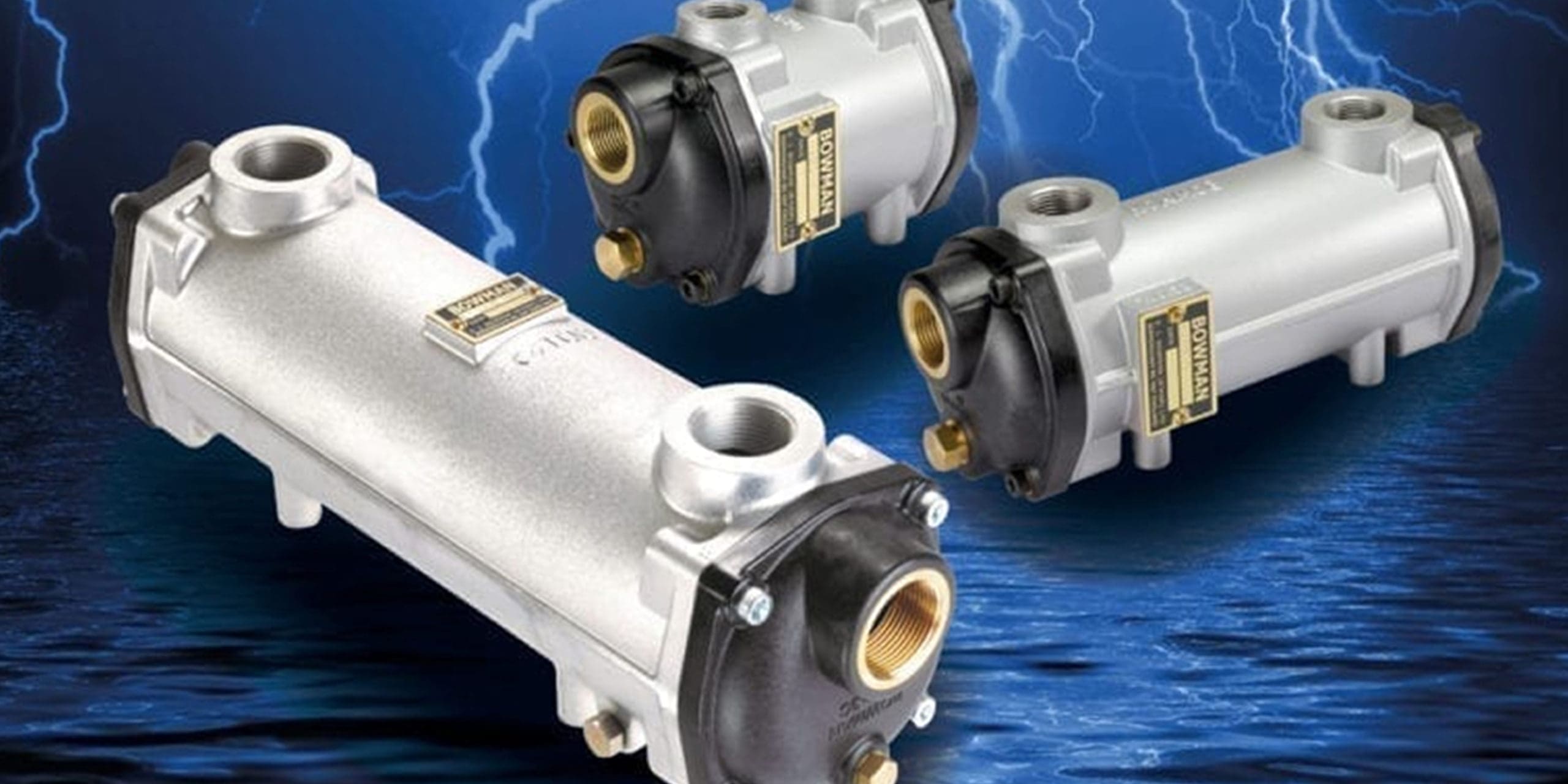
The reliable solution for cooling Electric & Hybrid Marine Propulsion Systems.
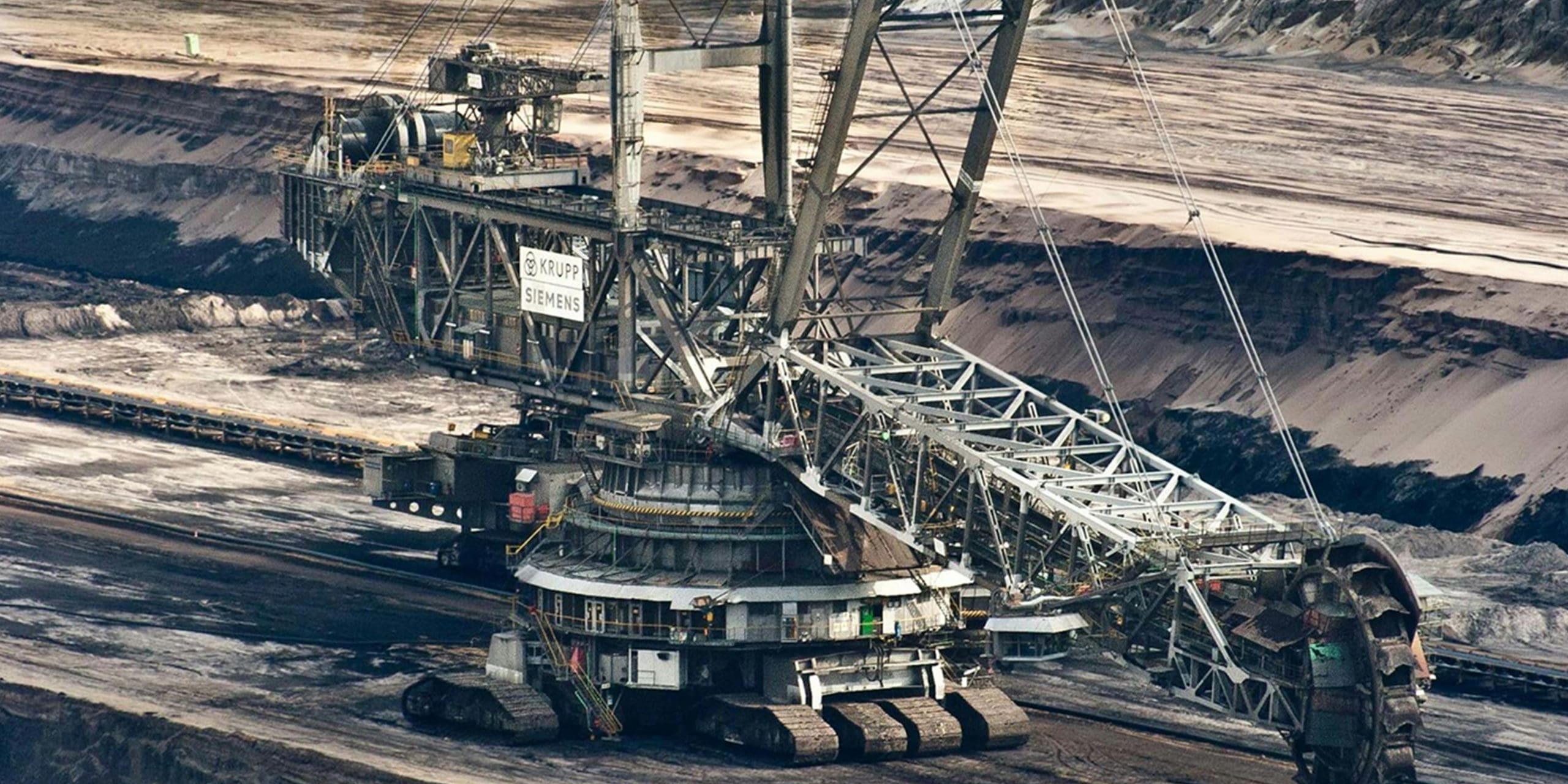
A comprehensive oil cooling solution for industrial hydraulic control systems, plus high temperature and mining applications.
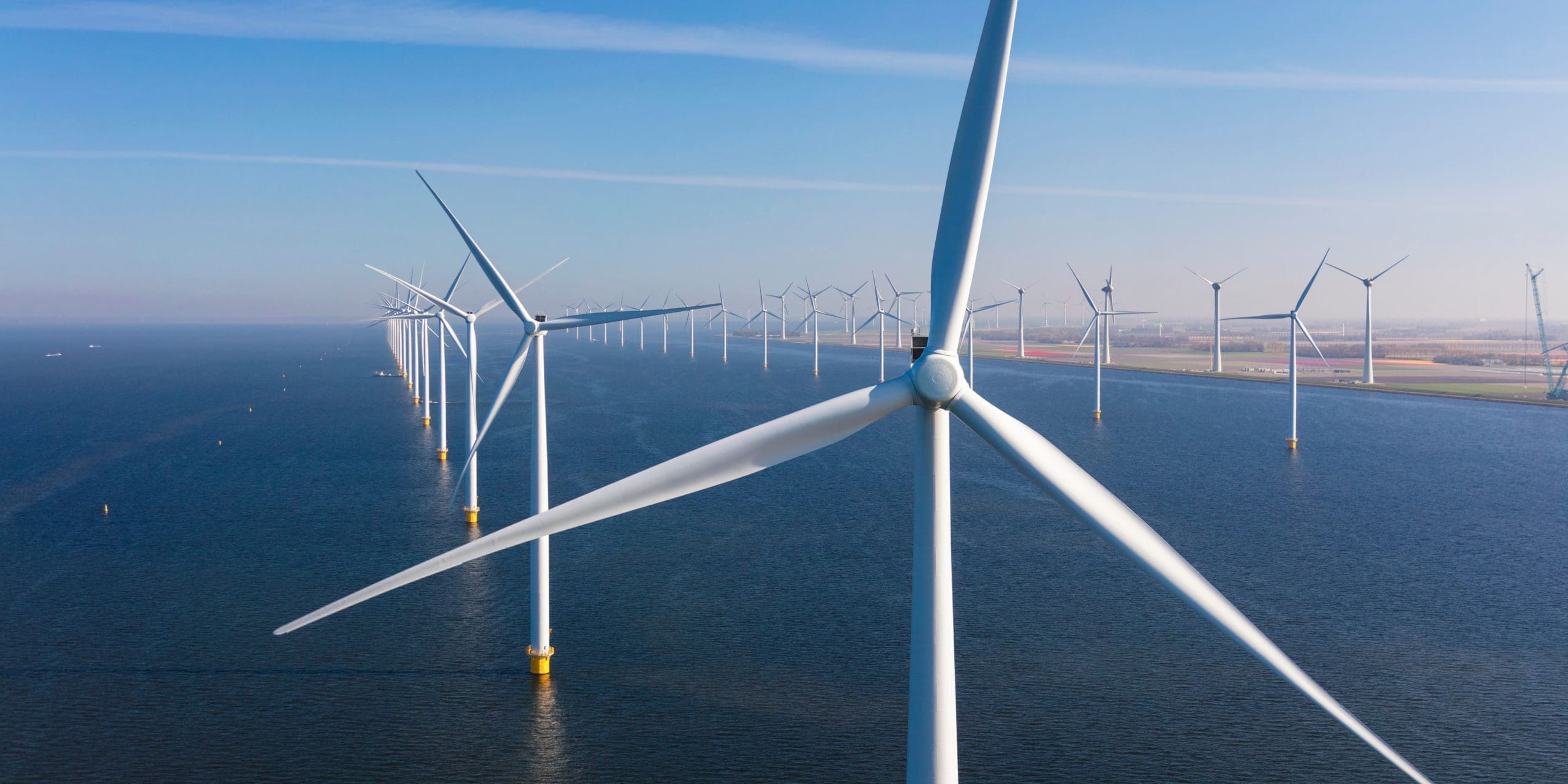
A complete solution for cooling complex on-board hydraulic equipment, including thruster and stabiliser systems.
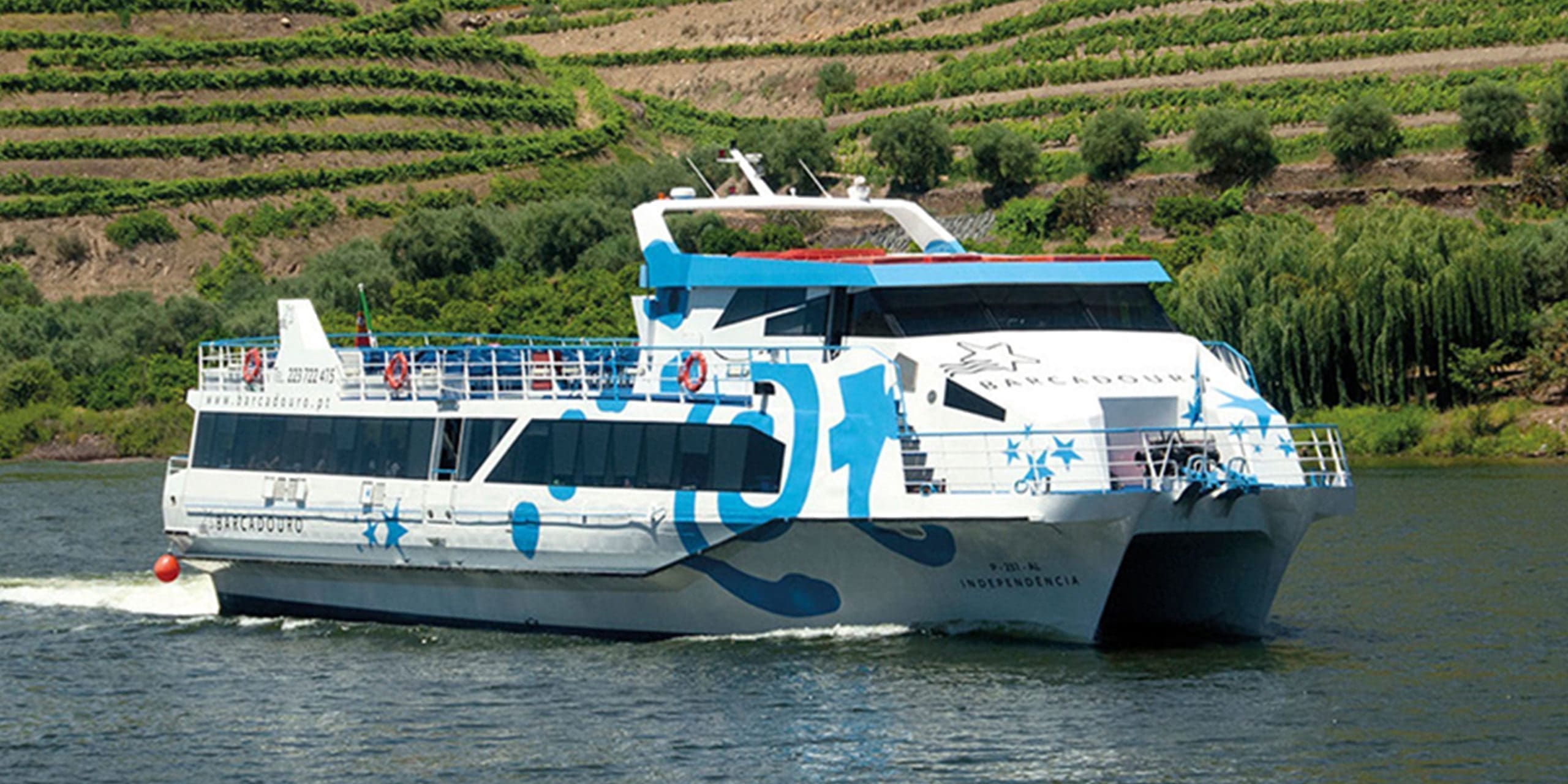
The complete cooling solution for marine engine propulsion, including the latest electric and hybrid systems.
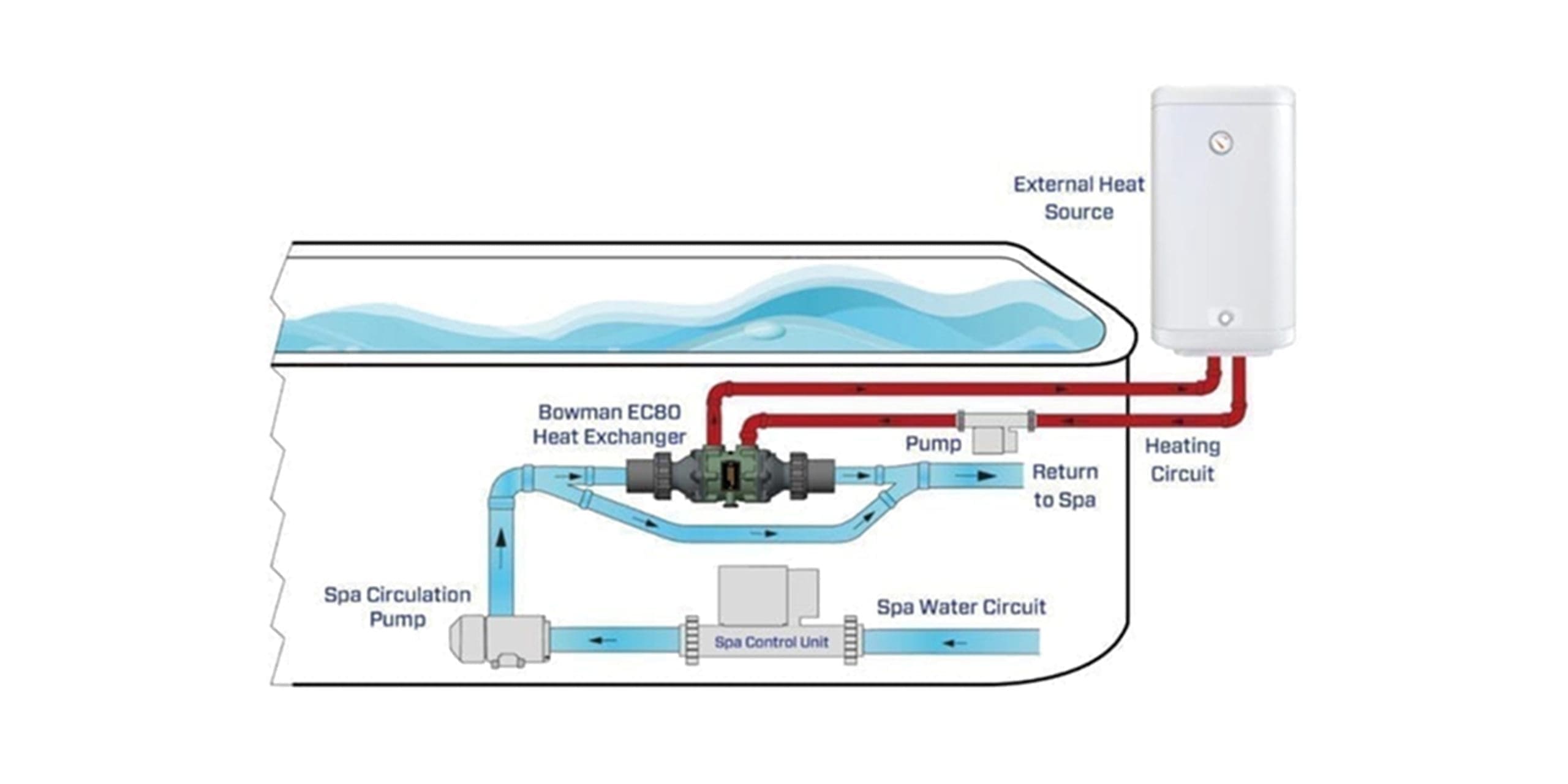
An energy efficient solution for heating hot tubs and swim spas faster, significantly reducing heat-up time for guest change-over periods.

Quality heat exchangers for efficient swimming pool heating, using boiler or renewable energy heat sources.
Can heat hot tubs in around 1 hour
Reduces energy costs significantly
Titanium tube core for long life
Fits directly into spa pipework
Can be used with gas, LPG and biomass boilers
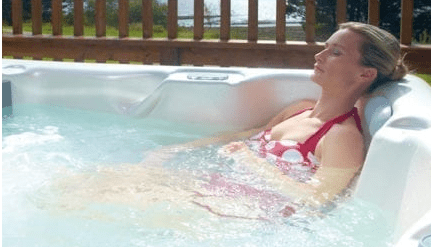
Even using pre-heated 25 °C water, it can still take more than 6 hours to achieve full temperature with an electric heater. A Bowman heat exchanger plus an external heat source, can reduce this to around 1 hour.

Electric heating is expensive and often double the price of gas or biomass heating. Switching to a Bowman heat exchanger with external boiler could slash heating costs dramatically.
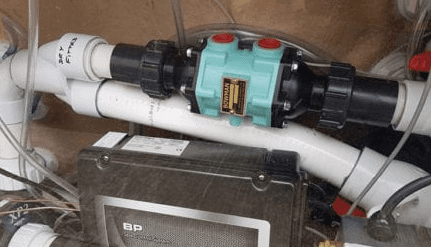
Though compact in size, it’s big on performance, capable of increasing the pool water by 10 °C to 12 °C per hour and is easily installed into the existing spa water circuit.
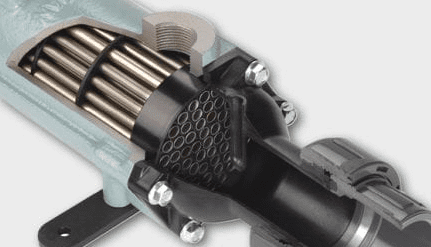
Hot water from the external boiler enters the heat exchanger and circulates inside the outer ‘shell’ of the unit and over the tube core, whilst spa water travels through the tubes collecting heat on the way.

The tube core is manufactured from titanium, one of the most durable materials available and perfect for spas and hot tubs. All titanium materials in contact with pool water come with a 10-year guarantee.
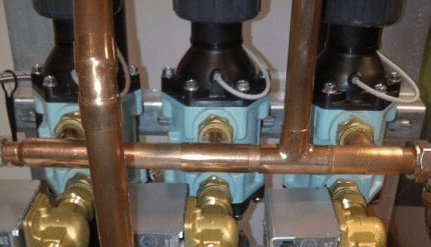
Bowman EC80 heat exchangers can be used with virtually any types of external heat source, including gas, biomass, LPG boilers, ground and air source heat pumps, plus the latest hybrid systems.
The table below enables the selection of the most appropriate heat exchanger for your swimming pool or spa. The information shows the amount of heat that can be transferred from conventional and condensing boilers, together with the basic dimensions of each unit. Additional heat exchangers are available but the two options shown are suitable for all hot tubs and swim spas. For further information please download the product brochure, contact us or your nearest stockist.
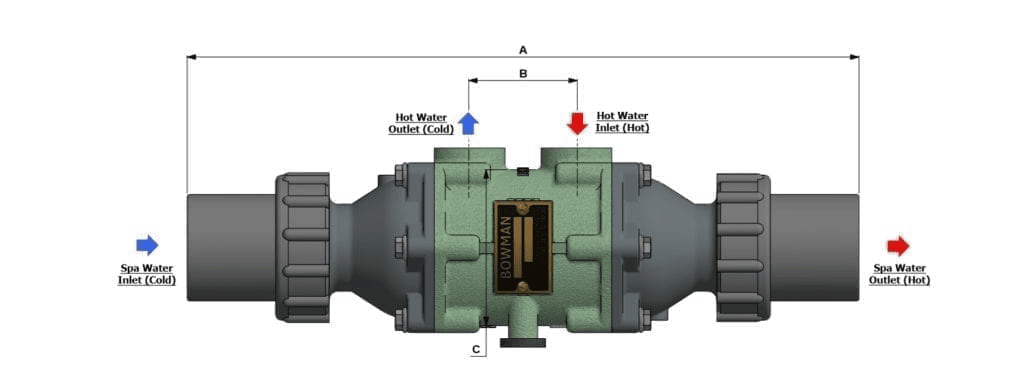
Note – Ratings and weight are specifically relevant to the titanium versions of each heat exchanger. Download the brochure for more detailed information. The heat-up times are estimated and based upon heating from ambient water temperature (quicker heat-up times can be achieved with pre-heated water).
| Part Number | Spa Size (m³) | Heat-Up Time (hours) | Max Pool Flow (l/min) | Heat Transfer at 82°C (kW) | Heat Transfer at 60°C (kW) | Dim. A (mm) | Dim. B (mm) | Dim. C (mm) | Weight (kg) |
|---|---|---|---|---|---|---|---|---|---|
| 5113-1T | 3 | 3 | 200 | 25 | 16 | 370 | 60 | 86 | 3.0 |
| 5113-2T | 10 | 5 | 200 | 50 | 30 | 456 | 140 | 86 | 4.0 |
| Part Number: 5113-1T | Spa Size (m³) 3 | Heat-Up Time (hours) 3 | Max Pool Flow (l/min) 200 | Heat Transfer at 82°C (kW) 25 | Heat Transfer at 60°C (kW) 16 | Dim. A (mm) 370 | Dim. B (mm) 60 | Dim. C (mm) 86 | Weight (kg) 3.0 |
| Part Number: 5113-2T | Spa Size (m³) 10 | Heat-Up Time (hours) 5 | Max Pool Flow (l/min) 200 | Heat Transfer at 82°C (kW) 50 | Heat Transfer at 60°C (kW) 30 | Dim. A (mm) 456 | Dim. B (mm) 140 | Dim. C (mm) 86 | Weight (kg) 4.0 |
The table below enables the selection of the most appropriate heat exchanger for your swimming pool or spa. The information shows the amount of heat that can be transferred from either boiler or renewable energy sources, together with the basic dimensions of each unit. Typical pool sizes are also shown as a guide. For further information please download the product brochure, contact us or your nearest stockist.

Note – Ratings and weight are specifically relevant to the titanium versions of each heat exchanger. Download the brochure for more detailed information.


Note – Ratings and weight are specifically relevant to the titanium versions of each heat exchanger. Download the brochure for more detailed information.


Note – Ratings and weight are specifically relevant to the titanium versions of each heat exchanger. Download the brochure for more detailed information.


Note – Weight provided are for the titanium versions.

For spas, hot tubs and small private pools
For mid sized private and commercial pools
For large commercial and public pools
For more information on JK190-5118-3 and PK190-5119-3 please contact Bowman.
For transferring heat from solar panels and heat pumps
For spas, hot tubs and small private pools
For mid sized private and commercial pools
For large commercial and public pools
For more information on JK190-5110-3 and PK190-5111-3 please contact Bowman.
For transferring heat from solar panels and heat pumps
No download content found.

Technical sales brochure includes product information, ratings charts, drawings and dimensions for the standard product range.

Technical sales brochure includes product information, ratings charts, drawings and dimensions for the standard product range.

Technical sales brochure includes product information, ratings charts, drawings and dimensions for the standard product range.

Technical sales brochure includes product information, ratings charts, drawings and dimensions for the standard product range.

Technical sales brochure includes product information, ratings charts, drawings and dimensions for the standard product range.

Technical sales brochure includes product information, ratings charts, drawings and dimensions for the standard product range.

Technical sales brochure includes product information, ratings charts, drawings and dimensions for the standard product range.

Technical sales brochure includes product information, ratings charts, drawings and dimensions for the standard product range.

Technical sales brochure includes product information, ratings charts, drawings and dimensions for the standard product range.

Technical sales brochure includes product information, ratings charts, drawings and dimensions for the standard product range.

Technical sales brochure includes product information, ratings charts, drawings and dimensions for the standard product range.

Technical sales brochure includes product information, ratings charts, drawings and dimensions for the standard product range.

Technical sales brochure includes product information, ratings charts, drawings and dimensions for the standard product range.

Technical sales brochure includes product information, ratings charts, drawings and dimensions for the standard product range.
Most hot tubs are supplied with an integral electric water heater, which are usually around 3 kW output, depending on the capacity of the hot tub. This type of heater will usually increase the water temperature by around 1 – 2 °C per hour, so it can take up to 24 hours to heat a tub using ambient temperature water.
To overcome this problem, some users fill their tub with pre-heated (25 °C) water from an adjacent boiler, but given that hot tubs usually operate at around 38-40 °C, it can still take a further 6 to 10 hours to achieve full temperature, depending on the performance of the electric heater.
This long heat up time has created a high level of dissatisfaction for many owners, who want their hot tubs to be available for use much faster than the standard heating system allows.
Consequently, many hot tub users, especially those in the commercial sector, are switching to a new type of heating system, using an external boiler, linked to a Bowman heat exchanger. The benefits include significantly reduced heat up times – typically 3 – 4 hours using ambient temperature water, or 1 hour using pre-heated water), plus significantly reduced energy costs compared to electric heating.
More information on heating hot tubs with Bowman heat exchangers.
Most hot tubs are supplied with an integral electric heater, usually around 3 kW output, depending on the water capacity. However, more recently, there has been a growing trend to use gas heating via an external boiler as this is faster at heating up the water compared to electric. This means when you are not using the hot tub, you can keep it at a lower temperature, or even switch the heating off completely, because it won’t take long to bring it up to the temperature when you are ready to use it.
The main reason is the length of time required to heat a hot tub with an electric heater – typically up to 24 hours, using cold water. To speed things up, some owners ‘pre-fill’ their tub with hot water from a boiler, but even this can require a further 6 to 10 hours of heating to achieve the required 38-40 °C temperature.
Whilst many domestic users were prepared to put up with the inconvenience, commercial users such as holiday parks, could not!
The demand for hot tubs when booking holiday accommodation has risen dramatically and is now the second most requested guest facility. To meet this demand, holiday venues had to find a faster way of heating them, due to guest changeover periods. Typically, there is only around 4-5 hours available to drain, clean, re-fill and heat up a hot tub before new guests arrive.
The solution was relatively simple – use an external heat source such as a gas boiler and simply bypass the hot tub’s electric heater. To enable this, a heat exchanger is required to transfer heat from the boiler water to the hot tub water. It’s exactly the same principle used for most swimming pools, but just on a smaller scale.
Bowman developed an ultra-compact heat exchanger that could be installed in the hot tub’s pipework and the result was hot tubs heated in 3-4 hours using cold water, or in around 1 hour using pre-heated water.
There was also another benefit. Heating hot tubs with electricity can be very expensive. By switching to gas boiler heating, many users reported a significant reduction in the energy costs – some as much as £500.00 per hot tub!
Swimming pool heat exchangers work by transferring heat energy from a hot water circuit, to the cooler pool water circuit, without the two fluids ever coming in direct contact with each other.
Most swimming pools are heated via a boiler, using fuels such as Gas, LPG or Biomass, as the energy source. In theory, the most efficient way to heat the pool water circuit would be to connect it directly to the boiler.
Were this to happen, the chemicals and minerals added to the pool water to keep it safe for use, would quickly erode and damage vital components inside the boiler, leading to premature failure and a costly replacement.
However, by using a heat exchanger to act as an ‘interface’ between the boiler water circuit and the pool water circuit, the boiler is protected from damage and the pool water is quickly heated up to the required temperature for use.
Shell and tube design heat exchangers are extremely popular for swimming pools, due to their efficiency and ease of maintenance. Inside the ‘shell’ there is a bundle of tubes, known as the ‘tube core’, through which the pool water passes in a single direction.
At the same time, hot water from the boiler is circulated around the outside of all the tubes in the tube core. Travelling in the opposite direction to the pool water flow, the boiler water transfers its heat to the pool water, before being recirculated back to the boiler, for reheating.
Both water circuits operate in a continuous heating cycle, until the total pool water volume has reached the required temperature, which is usually around 28-30 °C.
Bowman manufactures a comprehensive range of swimming pool heat exchangers for everything from spa pools and hot tubs, up to Olympic size pools.
More information on Bowman swimming pool heat exchangers.
Selecting the correct heat exchanger is very important to ensure the pool heats up quickly to desired temperature. The main issues to consider when sizing a swimming pool heat exchanger are;
More information about heat exchanger selection, read the article ‘Why doesn’t my pool heat up faster?’
Selecting the correct heat exchanger is very important to ensure the pool heats up quickly to desired temperature. The main issues to consider when sizing a swimming pool heat exchanger are;
More information about heat exchanger selection, read the article ‘Why doesn’t my pool heat up faster?’
Selecting the correct heat exchanger is very important to ensure the pool heats up quickly to desired temperature. The main issues to consider when sizing a swimming pool heat exchanger are;
More information about heat exchanger selection, read the article ‘Why doesn’t my pool heat up faster?’


Bowman CHP heat exchangers provide vital heating for the Halley VI Antarctic research station.

If you can’t stand the heat – get a Bowman heat exchanger! How Bowman heat exchangers have solved a major cooling headache for a Portuguese river cruising company.

Bowman heat exchangers are delivering 21st century reliability and efficiency to an historic open air pool complex in South Wales.

A new ‘closed loop’ grain drying system, using Bowman heat exchangers has significantly reduced energy costs and improved efficiency in Finland.

Bowman CHP heat exchangers provide vital heating for the Halley VI Antarctic research station.

If you can’t stand the heat – get a Bowman heat exchanger! How Bowman heat exchangers have solved a major cooling headache for a Portuguese river cruising company.

Bowman heat exchangers are delivering 21st century reliability and efficiency to an historic open air pool complex in South Wales.

A new ‘closed loop’ grain drying system, using Bowman heat exchangers has significantly reduced energy costs and improved efficiency in Finland.
If you have a specific enquiry or would like to talk to one of our technical sales engineers, you can contact us by phone or email, using the contact details below. For more general enquiries, simply fill in and return the contact form for a fast response.
Tel: +44 (0)121 359 5401
E-mail: [email protected]
A network of authorised, international Bowman distributors, who hold product stocks and provide local service, is also available.